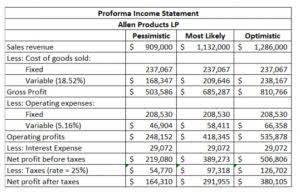Content

Instead of waiting for cash to change hands, an accountant records income the moment the firm earns it, such as when the firm sends an invoice to a customer. Expenses get recorded as soon as the firm receives a bill, rather than later, when it pays the bill. This is one of the most important distinctions from managerial accounting, which by contrast, involves preparing detailed reports and forecasts for managers inside the company. Financial accounting and financial reporting are often used as synonyms.
Please refer to the Payment & Financial Aid page for further information. Updates to your application and enrollment status will be shown on your Dashboard. After submitting your application, you should receive an email confirmation from HBS Online.
What materials will I have access to after completing Financial Accounting?
The questions flow as if two people were in a conversation, with each answer triggering the next logical question. Terms and concepts are introduced and explained such that the learner can understand the discussion. The content appears to reflect GAAP and IFRS accurately, no errors were noted. The lack of a glossary and the need for a better index were the key distractors. The presentation of corporations could be better (advantages, disadvantages, sub-chapter S, etc.)
Th end of chapter questions should be linked to the sections in the test where the material can be found. By far, the weakest aspect of this text is the lack ancillary materials.
Why accounting is better than finance?
Finance is generally considered the shifting or manipulation of money, whereas accounting is the tracking of these manipulations. In other words, finance works to plan the distribution of business assets — accounting ensures accurate tracking of these transactions.
There are several actions that could trigger this block including submitting a certain word or phrase, a SQL command or malformed data. In this case, the company will record all invoices and receipts concerning Mr. X to analyze sales gained from Mr. X. Under the “historical cost convention”, therefore, no account is taken of changing prices in the economy. Join us in maintaining financial transparency and driving our organization’s growth. The Better Finance podcast explores the changing dynamics of the business world and what it means for finance leaders of today and tomorrow.
Three components of financial statements
Access to course materials and the course platform ends 60 days after the final deadline in the program. At the end of each course module, you will be able to download a PDF summary of the module’s key takeaways. At the end of the program, you will receive a PDF compilation of all of the module summary documents. This website is using a security service to protect itself from online attacks.
What is difference between accounting and financial accounting?
The main difference between them is that those who work in finance typically focus on planning and directing the financial transactions for an organization, while those who work in accounting focus on recording and reporting on those transactions.
Members of financial accounting can carry several different professional designations. Companies engage in financial accounting for a number of important reasons. For corporations, the report is called a statement of shareholders’ equity (or stockholders’ equity).
The Financial Statements
Financial accounting is a specific branch of accounting involving a process of recording, summarizing, and reporting the myriad of transactions resulting from business operations over a period of time. These transactions are summarized in the preparation of financial statements—including the balance sheet, income statement, and cash flow statement—that record a company’s operating performance over a specified period. The “soft” start of chapters 1 and 2 sets the stage to ease the learner into an overview of the financial statements, recording transactions and adjusting entries. Topics after this follow the balance sheet order, pulling in the related income statement topics.
- A separate chapter on financial statement analysis should be added, or each chapter should incorporate these concepts.
- If you want to understand the detail for a particular account, such as the current amount of accounts receivable outstanding, you would access the general ledger for this information.
- And it would also document share capital from issuing stocks, as well as retained earnings, which shows the accumulated profits left over after paying dividends or distributions to stockholders.
- In addition to this, performance and profitability of various financial periods can also be compared easily.
- A module is composed of a series of teaching elements (such as faculty videos, simulations, reflections, or quizzes) designed to impart the learnings of the course.
Quickly adapt to new and evolving accounting standards with a centrally managed set of accounting rules. Gain control over your financials by unifying financial data from multiple accounting systems and simplifying processes. The information provided by the Accounting for Startups: The Ultimate Guide is useful in making comparisons between different organisations and analysing the results thereof, on various parameters. In addition to this, performance and profitability of various financial periods can also be compared easily. With this convention, accounts recognise transactions (and any profits arising from them) at the point of sale or transfer of legal ownership – rather than just when cash actually changes hands.
In This Free Course, You Will Learn How To
And it would also document share capital from issuing stocks, as well as retained earnings, which shows the accumulated profits left over after paying dividends or distributions to stockholders. You may also hear the income statement referred to as the https://kelleysbookkeeping.com/bookkeeping-payroll-services-at-a-fixed-price/ profit and loss statement. Create complete and accurate journal entries by simplifying and automating otherwise lengthy and manual reconciliation. Create a single source of financial truth that your corporate accounting and FP&A teams can rely on.





